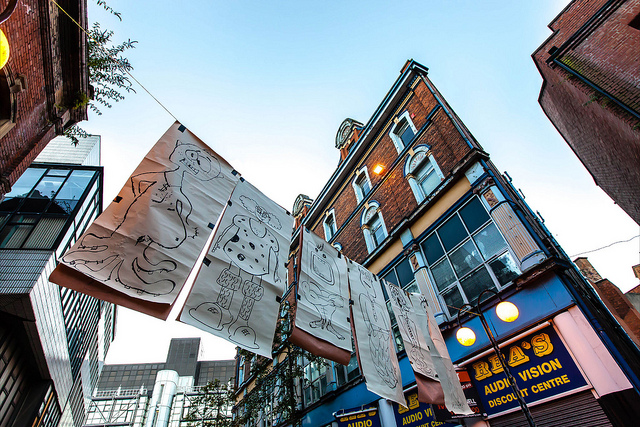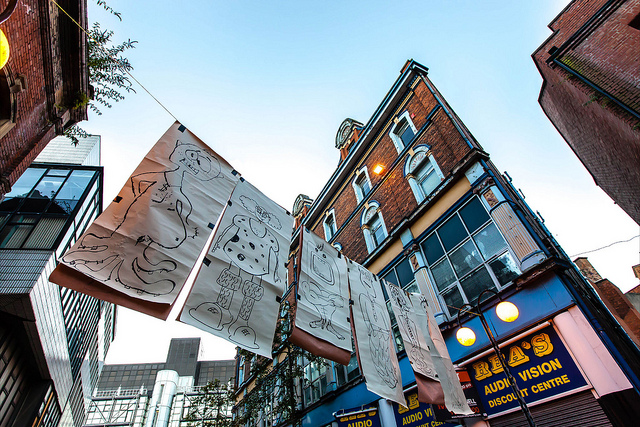Where has the culture and arts strategy got to?
Back in November 2015, prior to the re-structuring of departments, the Department of Culture, Arts and Leisure published a consultation document, seeking views on the development of a ‘Strategy for Culture & Arts 2016-2026’. This article examines progress so far towards this strategy, including a comparison with some similar strategies elsewhere.

Responsibility for the strategy now lies with the new Department for Communities, and indeed the Committee for Communities received a briefing from Departmental officials at its meeting on 16th June 2016 on the outcomes of the consultation:
The overarching aim of the consultation was to ascertain views on how arts and culture can best promote equality and tackle poverty and social exclusion, making arts and culture available to everyone.
According to the consultation document, it seems that the themes and expected outcomes of the proposed strategy are as follows:
| Theme / Aim | Expected Outcome |
| Equality through arts and culture | We will belong to a society that promotes equality for all citizens to enjoy artistic and cultural pathways of choice and where arts and culture have helped to tackle poverty and social disadvantage. |
| Creativity and skills | We will belong to a confident, articulate modern, highly skilled society that values arts and culture and its underpinning contribution to a strong creative economy. |
| Valued arts and culture | We will belong to a society where everyone will respect and acknowledge our rich and diverse arts and culture sectors and where arts and culture will be supported and appreciated by local and central government policy makers and funders. |
| Rich cultural expression | We will be a more inclusive society that embraces and encourages creative and cultural expression throughout the community while caring about our artistic, linguistic, cultural and heritage capital to ensure a lasting legacy for future generations. |
| Well being | We will be a healthy and fulfilled society, enjoying a rich quality of life and caring for our collective wellbeing. |
The strategy states that the outcomes will be driven forward by a Delivery Group whose role and function will be to oversee the implementation of the Strategy, and periodically review and monitor its implementation. The Strategy Delivery Group will be chaired by a senior official from the Department and include sectoral representatives as well as the various government partners.
Given the recent reduction in the number of government departments here and the subsequent transfer of responsibilities to the Department for Communities, the make-up of this Delivery Group is still unknown.
The strategy also states that the Department will publish a summary of responses and the previous Minister had indicated this would be available in early March 2016.
A digest of consultation responses was published on 5 May 2016. Responses were also received online via Survey Monkey and a separate document compiling those responses has also been published. The digest document states that the overwhelming consensus of responses was very supportive and positive. The major themes emerging from the consultation process included the intrinsic value of the arts, the role of education and funding structures. The document also advises that detailed analysis of the responses continues and a further report will be made available on the Department’s website.
While the collection of views from stakeholders is useful in providing stakeholder insight to the proposed strategy, the documents do not include details on what the finalised strategy will contain, or how the expected outcomes are to be achieved.
What do strategies look like elsewhere?
Other jurisdictions have, in recent years, put together similar strategies in relation to culture and arts. The most extensive of these is the ‘Culture White Paper’ prepared by the Westminster Department for Culture, Media & Sport. This explores similar themes to our own proposed strategy. However, the White Paper is perhaps clearer in setting out how these aims will be achieved and which of its stakeholders will be included in that process.
In the Republic of Ireland, the Department of Arts, Heritage and the Gaeltacht have also published their culture strategy consultation entitled ‘Culture 2025’. While the final results are still to be published, the aims are broadly similar to those in the Northern Ireland strategy.
Elsewhere, responsibility for these strategies does not solely lie with the central government department, with arms-length bodies also playing a role. For example, the Arts Council of Wales and Creative Scotland have developed their respective culture strategies as opposed to departmental officials. Funding for both of these groups mainly comes from central government and the National Lottery. Both of these strategies bear some similarities to the Northern Ireland strategy but place a stronger emphasis on the need for their regions to promote their culture not only to attract business but also for the purpose of attracting tourism etc.
A table is provided below to indicate how other jurisdictions’ strategies compare when set against the themes/aims of the Northern Ireland strategy. We can see that the majority of strategies touch on similar areas but perhaps do not place as strong a focus on the theme of wellbeing as Northern Ireland.
| Northern Ireland | England | Scotland | Wales | Republic of Ireland | |
| Equality through arts and culture | X | X | X | X | X |
| Creativity and skills | X | X | X | X | X |
| Valued arts and culture | X | X | X | ||
| Rich cultural expression | X | X | X | ||
| Well being | X |
While comparisons can be drawn between the various strategies, as far as the Northern Ireland culture and arts strategy is concerned until publication it remains to be seen what the precise intentions or expected outcomes will be.



